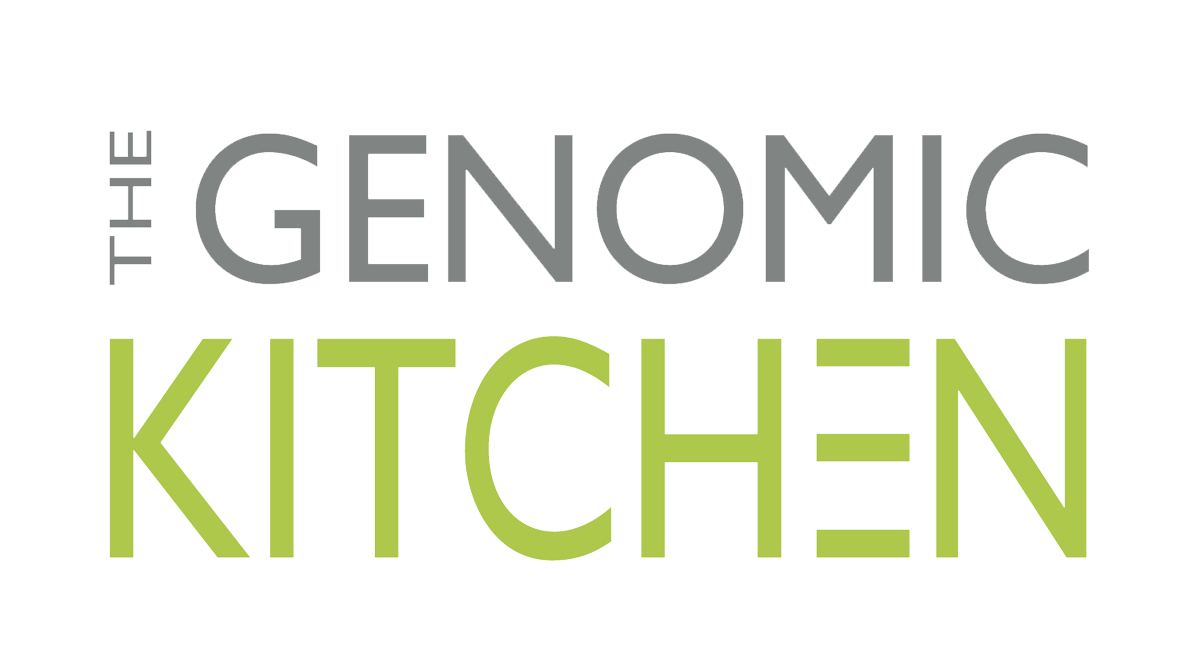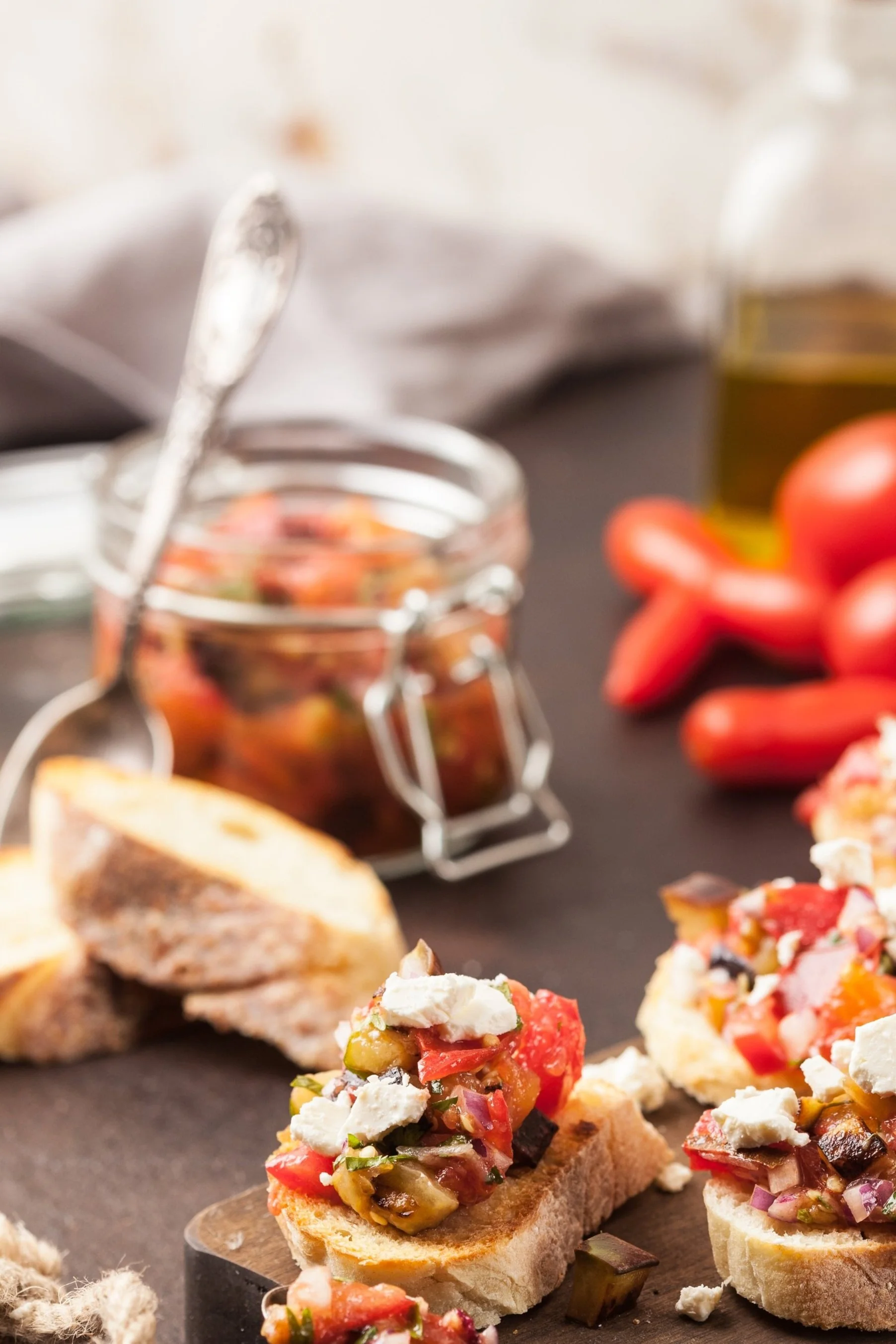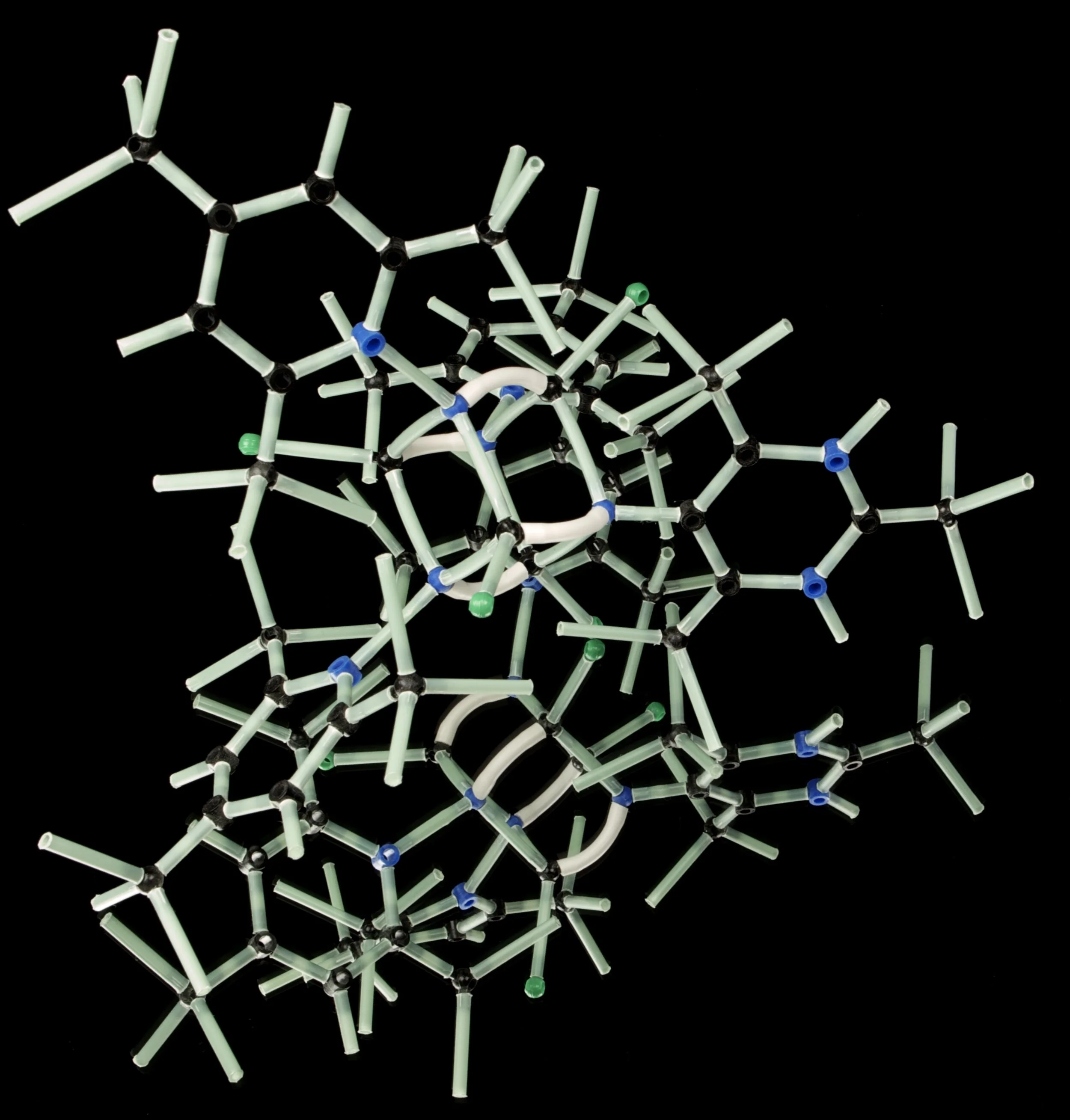Culinary Genomics: A Personalized Nutrition Approach To Better Health
/Culinary genomics: Choosing and Preparing Food That Influences Your Genes
"Culinary" as in delicious food in the kitchen. "Genomics" as in the genes you inherited from your parents and the health-promoting (or inhibiting) proteins those genes make.
Yes, you can influence your genes with food! And nothing is more influential to how your genes behave than food. Exercise isn’t. Stress isn’t. Not your environment. It’s food.
The kitchen is the foundation for your wellness and longevity through the power of culinary genomics.
In this article, you will learn strategies to choose and prepare foods to influence your genes toward better health even without a DNA test. Regardless of your unique genes, there are foods that can help you
Reduce inflammation and auto-immune issues
Improve mental acuity and your mood
Lower your risk for diabetes, cardiovascular disease or cancer
Definitely strengthen your gut health
Help to balance weight
Build muscles and tissues
Live a longer, healthier and more disease-free life
In other words, I want to help you use nutrition to reach just about any personal health goal you have.
Your genes are like a chef (and you decide on your health)
Recent scientific advancements have now shown us the links between your genes and food. We are learning more precisely how to connect the food we eat to your genes and the critical proteins they make. These proteins are so powerful that they affect all processes in your body. Learning how to "eat for your genes" puts the kitchen at center stage to your health because of its profound influence on your genes.
How Culinary Genomics works?
Just like how your restaurant order is communication to the kitchen, the food you eat is communication to your genes.
When it comes to ordering at a restaurant, the first thing you decide is what you would like to eat and then place your order with your server. Your order gets communicated to the kitchen. Chefs in the kitchen begin to prepare your meal by taking into account of their recipes, the ingredients they have on-hand and any special requests from you, e.g., ingredient substitutions, dressings on the side, etc. Once your order is ready, the server delivers your meal to your table.
In this case, think of the chefs as your genes. Your genes follow special protein-making instructions provided by you. The ensuing meal created by your genes contains the health-promoting proteins that you need to operate. Talk about personalized nutrition!
What’s really neat is that your can
Choose specific ingredients to influence your genes
Your genes will make the right proteins for the meal you need (Meal = health)
You can steer your health by eating the right foods for your genes to produce the proteins you need for your health goals
Order Food For Your Genes Like A Meal At A Restaurant
Just as you place an order for a meal in a restaurant, you can prepare an order for your genes based on the ingredients you choose. Through ingredient choice, you can prepare an order for proteins that reduce inflammation and auto-immunity, improve mental acuity and moods, lower risks for diabetes, cardiovascular disease or cancer, help to balance your weight and more. Alternatively, you could make or order a meal containing ingredients that prompt your genes to make inflammatory proteins which you don’t really want.
Culinary Genomics puts YOU in charge of your health through your mouth
The Power Of Culinary Genomics..
Lies in understanding which food communicates with which genes to produce which proteins. This science of culinary genomics comes from nutrigenomics. Nutrigenomics is the science of how information from food influences gene behavior. Culinary genomics is how we walk this food-gene talking science into the kitchen and put it on your plate. Or…. how to put the right ingredients, prepared in the right way, onto your plate and into your mouth for better control over your health.
Two guidelines are very important for culinary genomics:
The quality of ingredients
How they're prepared.
And that’s what we’re covering in this article. We scoured the science for more than three years to create a toolbox of ingredients that offers the best communication with your genes and your health. Download our Quickstart Guide to learn more about what ingredients you need to optimize your health, based on the cutting-edge science of nutrigenomics.
Culinary Genomics Principle # 1: Food Quality
I can’t walk with you into the kitchen without a little pep talk about food. You now know that food is the chief information source for your genes which are at the heart of how your biology operates. Just as your kitchen depends on your recipes, ingredients, substitutions, and special requests, your genes are dependent on the quality of the food your provide to them.
Think of it this way. Imagine having a wonderful kitchen, stocked with all the gadgets and clean and tidy workspaces. What happens if you only have half of the ingredients you need and the ones you have are old and the lowest quality possible? Do you expect you’ll make the best dish ever? I highly doubt it. You may not be able to make a basic two-course meal. Beautiful kitchens with the best recipes can only do so much if your ingredients are sub-par.
This is what happens when your food selection is limited, low quality or comes with an invisible does of contaminants like pesticide residue, heavy metals or rancidity. All of these elements create clutter and obstructions for your genes. The result: poorly functioning proteins.
Food is the chief information source for your genes which are at the heart of how you operate. Feed them well
Strategies For Selecting the Best Quality Food For Your Health
Eat whole foods as often as you can.
A “Whole Food” is one that is as close to nature as possible. This means choosing whole apples over apple pie! Plain nuts over ones covered with candy. Fresh herbs whenever you can, although dried ones definitely have a place in my kitchen.
Don’t guess
Ask where your food comes from and how it was grown as often as you can. Purchase as many foods as possible that are raised or produced by someone/a company you know and trust.
Contaminants are toxic. Contaminants in food are potent, but they are not the only source. Your body’s total contaminant burden has contributors from many areas: air, water, food, household products, cosmetics, bath products, laundry products, gardening products etc. Since food is at the heart of how you function, make it the least contaminated possible. It talks to your genes.
Don’t be fooled: by individuals who are employed to “read the science” and tell you the “correct” story about environmental contaminants on TV or in blogs, magazines, podcasts or wherever. Most are not working in the clinical space. They don’t see individuals like you who are seeking help. I read science, individual genetic reports and nutritional biochemistry daily. I talk to patients/clients every day.
Your genes do not lie.
Neither to your labs.
Neither does your health.
Chemical inputs contaminate your biochemistry. and for some of you, the burden is far heavier than others. Genetics tell us this. Make food your cleanest source. It talks to your genes. PR people don’t.
Culinary Genomics Principle #2: Food Preparation
Culinary genomics determines which food to prepare and how to prepare it. Principle # 1 focuses on how to choose quality foods that will communicate wellness and longevity to your genes. Principle # 2 is knowing what to do with food in your kitchen. This is the true power of culinary genomics. It enables you to communicate with your genes in ways that your genes understand. The kitchen is the critical connector between the food you buy and its interaction with your genes and your health.
Think of it like this. If you have quality tires on your your car, but they are not fully inflated, you get poorer gas mileage and your tires wear out faster. Pump them up and your gas budget goes further, and your maintenance bill is lower. In the kitchen, choose the right food, prepared in the right way and the information it provides to your genes is at the highest level of efficiency. I call this fine-tuning the food-gene conversation, or even getting the best “return on ingestion.” I call this R.O.I.
Your kitchen is the critical connector between the food you buy and its interaction with your genes and your health.
How to Get the Best Health Mileage From Your Food
Using the knowledge of food science we can understand how to prepare ingredients so that we retain the bioactives, vitamins and minerals that secure our best food-gene conversation. As an example, we know that heat and cooking in liquid can destroy Vitamin C in food. Bioactives are sensitive to heat in a similar way. These essential molecules are instrumental to how we activate or deactivate genes. We want to retain them in their most potent “active” form. Food science tells us which cooking techniques preserve them in their active or “user-friendly for your body” form.
Here are some simple strategies for you that help you understand how Culinary Genomics occupies a different space in the culinary arts
Cooked and sun-dried tomatoes contain lycopene which activates antioxidant-producing genes. These forms of tomatoes communicate with your genes. Raw tomatoes don’t activate genes!
Quercetin (found in onions, leeks, garlic, and radishes) and kaempferol (found in red raspberries, capers, and tomatoes) are far more tolerant of heat during cooking than other bioactives, so it's okay to eat these foods cooked.
When you roast turmeric root, you produce additional bioactives that can turn on antioxidant-producing genes, so enjoy your turmeric roasted for the most "Return On Ingestion."
Cutting cruciferous vegetables (e.g., broccoli, cabbage, cauliflower, Brussels sprouts) and letting them sit for up to an hour helps them produce a heat-stable bioactive called sulforaphane which is a powerful gene activator.
If you like your veggies cooked, the best techniques are brief steaming or very rapid (no longer than 2 minutes) high-temperature wok cooking, where the wok is preheated and the high quality oil is hot before cooking
If you are interested in diving deep into Culinary Genomics, join us for GENEius In Your Kitchen where you’ll explore the science cooking techniques and recipes that bring it all together for you!
Learn more about the best cooking methods to support your genes.
Connecting Your Unique Genes to Culinary Genomics
The principles I have discussed so far in this article are applicable to each and every one of us. No DNA test required. That said, if you’re looking for a food prescription that’s unique to your genes and your biochemical make up, then a DNA test is the foundational tool. Today when I am working in the clinic, I use DNA testing to understand where the imbalances in the biochemistry of each client resides. This allows me to operate outside of “guesswork", generalized nutrition recommendations and “good for you” recipes that may not actually contain the nutrient information you and your genes need.
I use DNA testing and my expertise in nutritional biochemistry and culinary translation to answer the following questions for my clients:
Which systems in the body do we need to support?
Which nutrients are needed to provide that support?
Which food delivers those nutrients?
Which culinary technique provides those nutrients in their best form?
Which recipes and meal ideas put these concepts on the plate
This is precision, life-changing work. And I love it.
How You Can Use the Power of Culinary Genomics Now
By now you understand that food is the best information your body can use. Culinary genomics ensures that you translate that essential information to your genes.
As humans our genes respond to food the same way. The bioactive in rosemary or thyme that activates specific genes in your body, activates the same genes in mine. The curcumin in turmeric that turns off the TNF-alpha inflammatory gene in your body, turns of the same gene in the in my body. The fundamental difference between you and is not whether to use turmeric in cooking, but how much turmeric you might need to turn your genes on or off versus me. We all need more of these health-promoting gene-influencing foods! Nutrigenomics and culinary genomics tells us why and how, respectively.
All this to say that you can take advantage of this science and culinary translation right now! You can go to the grocery store, grab some of the foods I suggest (read the linked blog), walk right into your kitchen and start cooking in a language that speaks to your genes.
At The Genomic Kitchen, we teach you how to choose and prepare food that coaxes your genes toward your best health. This is culinary genomics.
If you didn’t do so already, download our QuickStart Guide to learn how to get started or
Dive into our Genomic Kitchen Express Course to explore more of the science and the cooking!
Join us for GENEius In Your Kitchen
Grab my book!
Listen to Amanda read an Excerpt from her book!
References
Mierziak, J.; Kostyn, K.; Boba, A.; Czemplik, M.; Kulma, A.; Wojtasik, W. Influence of the Bioactive Diet Components on the Gene Expression Regulation. Nutrients 2021, 13, 3673. https://doi.org/10.3390/nu13113673
Ozkur, M., Benlier, N., Takan, I., Vasileiou, C., Georgakilas, A. G., Pavlopoulou, A., Cetin, Z., & Saygili, E. I. (2022). Ginger for Healthy Ageing: A Systematic Review on Current Evidence of Its Antioxidant, Anti-Inflammatory, and Anticancer Properties. Oxidative medicine and cellular longevity, 2022, 4748447. https://doi.org/10.1155/2022/4748447
Passarino, G., De Rango, F., & Montesanto, A. (2016). Human longevity: Genetics or Lifestyle? It takes two to tango. Immunity & ageing : I & A, 13, 12. doi:10.1186/s12979-016-0066-z.
Percival, S., Vanden Heuvel, J. P., Nieves, J. N. et al. (2012) Bioavailability of Herbs and Spices in Humans as Determined by ex vivo Inflammatory Suppression and DNA Strand Breaks. J Am Coll Nutr, 31(4), 288-294.
Rescigno, T., Micolucci, L., Tecce, M. F., & Capasso, A. (2017). Bioactive Nutrients and Nutrigenomics in Age-Related Diseases. Molecules (Basel, Switzerland), 22(1), 105. doi:10.3390/molecules22010105.
Senger, D. R., Li, D., Jaminet, S. C., et al. (2016). Activation of the Nrf2 Cell Defense Pathway by Ancient Foods: Disease Prevention by Important Molecules and Microbes Lost from the Modern Western Diet. PLoS One, 11(2), e0148042.
Sikalidis, A. K. (2019). From Food for Survival to Food for Personalized Optimal Health: A Historical Perspective of How Food and Nutrition Gave Rise to Nutrigenomics. J Am Coll Nutr, 38(1), 84-95. doi: 10.1080/07315724.2018.1481797.
Wang, G. C., Farnham, M., & Jeffery, E. H. (2012). Impact of Thermal Processing on Sulforaphane Yield from Broccoli (Brassica oleracea L. ssp. italica). J. Agric. Food Chem, 60(27), 6743-6748.










